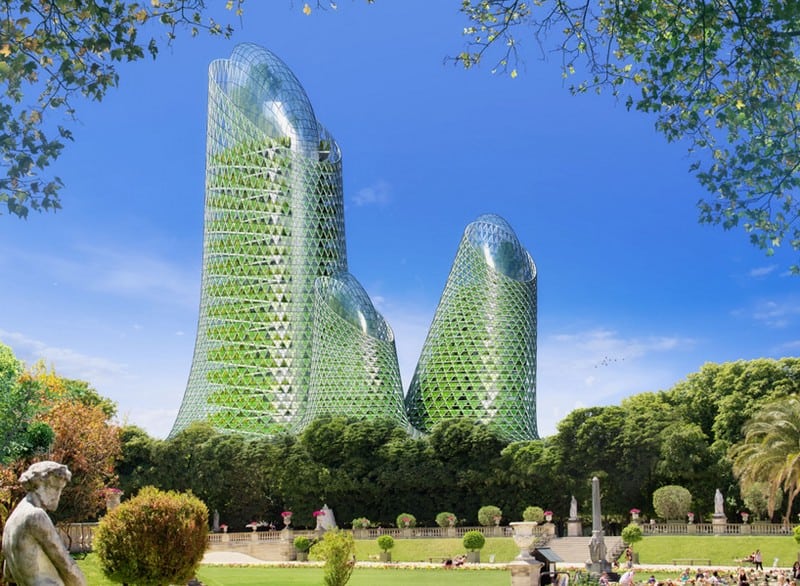.
.
.
Presumably these Smart Cities won't just survive on thin air and services. They will need extensive investment in INDUSTRY to make them viable....vis a vi Detroit.
________________________________________
India builds first 'smart' city as urban population swells
Reuters and Times of India.

India's push to accommodate a booming urban population and attract investment rests in large part with dozens of "smart" cities like the one being built on the dusty banks of the Sabarmati river in Gujarat.
So far, it boasts modern underground infrastructure, two office blocks and not much else.
 The plan, however, is for a meticulously planned metropolis complete
with gleaming towers, drinking water on tap, automated waste collection
and a dedicated power supply - luxuries to many Indians.
The plan, however, is for a meticulously planned metropolis complete
with gleaming towers, drinking water on tap, automated waste collection
and a dedicated power supply - luxuries to many Indians. With
an urban population set to rise by more than 400 million people to 814
million by 2050, India faces the kind of mass urbanisation only seen
before in China, and many of its biggest cities are already bursting at
the seams.
With
an urban population set to rise by more than 400 million people to 814
million by 2050, India faces the kind of mass urbanisation only seen
before in China, and many of its biggest cities are already bursting at
the seams. Ahead of his election last May, Prime Minister Narendra Modi promised 100 so-called smart cities by 2022 to help meet the rush.
Ahead of his election last May, Prime Minister Narendra Modi promised 100 so-called smart cities by 2022 to help meet the rush.
READ ALSO: What makes a city 'smart'?
At a cost of about $1 trillion, according to estimates from consultants KPMG, the plan is also crucial to Modi's ambition of attracting investment while providing jobs for the million or more Indians who join the workforce every month.(It will attract more than $1 trillion......closer to $20--30 trillion by 2050, if you include outside investment, private investment and government investment in INFRASTRUCTURE and INDUSTRY in these smart cities-------AND why not Mohenjo Daro and Harrapa...the worlds first highly engineered smart cities)
 His grand scheme, still a nebulous
concept involving quality communications and infrastructure, is
beginning to take shape outside Gandhinagar, capital of Gujarat, with
the first "smart" city the government hopes will provide a model for
India's urban future.
His grand scheme, still a nebulous
concept involving quality communications and infrastructure, is
beginning to take shape outside Gandhinagar, capital of Gujarat, with
the first "smart" city the government hopes will provide a model for
India's urban future. "Most (Indian) cities have not been
planned in an integrated way," said Jagan Shah, director of the National
Institute of Urban Affairs which is helping the government set
guidelines for the new developments.
"Most (Indian) cities have not been
planned in an integrated way," said Jagan Shah, director of the National
Institute of Urban Affairs which is helping the government set
guidelines for the new developments. Among the challenges to
getting new cities built or existing cities transformed is the lack of
experts who can make such huge projects work and attracting private
finance.
Among the challenges to
getting new cities built or existing cities transformed is the lack of
experts who can make such huge projects work and attracting private
finance. "To get the private sector in, there is a lot of risk
mitigation that needs to happen because nobody wants a risky
proposition," he told Reuters, stressing the need for detailed planning.
"To get the private sector in, there is a lot of risk
mitigation that needs to happen because nobody wants a risky
proposition," he told Reuters, stressing the need for detailed planning. To build smart cities, India allocated 60 billion rupees ($962 million)
in its annual Union budget for the financial year starting April 1,
even as it spent just a fraction of last year's allocation of 70.6
billion rupees, said Shah.
To build smart cities, India allocated 60 billion rupees ($962 million)
in its annual Union budget for the financial year starting April 1,
even as it spent just a fraction of last year's allocation of 70.6
billion rupees, said Shah.Old cities or new?
Gujarat International Finance Tec-City (GIFT), as the smart city is called, will double up as a financial hub, with tax and other breaks to lure banks, brokerages and other businesses.
Developed in partnership with IL&FS Engineering and Construction, it aims to compete with India's own financial capital of Mumbai as well as overseas rivals like Dubai and Singapore.
Pressure on India's existing urban centres is already intense, with cities like Mumbai gridlocked by traffic and hampered by poor infrastructure and a lack of amenities like parks and effective public transport.
Yet some experts believe that building new cities may not be the answer to India's swelling urban population.
"To address India's urbanisation challenge we have to start looking at our existing cities," said Shirish Sankhe, director at consultant McKinsey and Company, India.
He added that new cities would be only a small part of the solution relative to brownfield projects.
India has built planned cities in the past, including Chandigarh, designed by French architect Le Corbusier, and Gandhinagar itself. But the scale of its current push is unprecedented.
A bird's eye view from atop one of the two office buildings on the 886-acre GIFT site, a venture which began when Modi was chief minister of Gujarat, shows little sign yet of the 9 billion rupees spent on the first phase.
But the sandy plain hides infrastructure including an underground tunnel for utilities, a first in India.